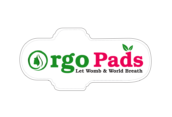Our Brand Story
Let womb & World Breathe
Orgo Pads
Orgo Pads Tech based company produces 100 % bio degradable raw materials for making sanitary pads that offer more comfort and sustainability.

OBJECTIVE
The main goal of Orgo pads is to produce 100 % compostable and bio degradable pads which can save the environment from hazards, chemicals and plastics. The pads are made using Ultra-thin technology which are Comfortable and healthy. The pads are equipped with Compostable disposable bags along with each napkin and the used pad may be converted in to fertilizer within 20 days. Thus leaving a Low carbon footprint.
Bio Plastics
Bioplastics are made wholly or in part from renewable biomass sources such as sugarcane and corn, or from microbe such as yeast. Some bioplastics are biodegradable or even compostable, under the right conditions. Bioplastics made from renewable resources can be naturally recycled by biological process, thus limiting the use of fossil fuels and protecting the environment. Therefore, bioplastics are sustainable, largely biodegradable, and biocompatible. Orgo Pads is sustainable alterative for Non bio degradable Super Absorbent Polymer (SAP) and made up of natural fibers. It offers high fluid retention time (10.2 times) compare to wood pulp and cotton Orgo pads is Tech based company
produces 100 % bio degradable raw materials for making sanitary pads that offer more comfort and sustainability.
Biodegradable sanitary pad made of top sheet with
degradable breathable non-woven fabrics and core
portion Bio SAP made of natural materials like Jute /
Banana fiber with nano technology, bottom sheet
also made of bio degradable sheets and individual pad packaging with bio degradable disposable bags

Bioplastics And Circular Economy
Circular economy is “restorative and regenerative by design, which aims to keep products, components and materials at their highest utility and value at all times, distinguishing between technical and biological cycles”. With this definition in mind, bioplastics fit in this new economic concept as they help to break away from the linear economy characterized by “make, use, dispose” in favour of a more circular model based on “make, use, reuse, recycle”.
Bioplastics, as part of the bioeconomy, are a perfect illustration of circularity in that they regenerate CO2 and use renewable raw
materials to make more sustainable everyday products.
Key Features
- 100 % compostable and bio degradable
- No environmental hazards
- No chemicals & Plastics
- Less weight 8gm
- The used pad may be converted in to fertilizer within 20 days
- Ultra-thin technology
- Low carbon footprint
- Compostable disposable bags along with each napkin
- Less weight 8gm
- The used pad may be converted in to fertilizer within 20 days


